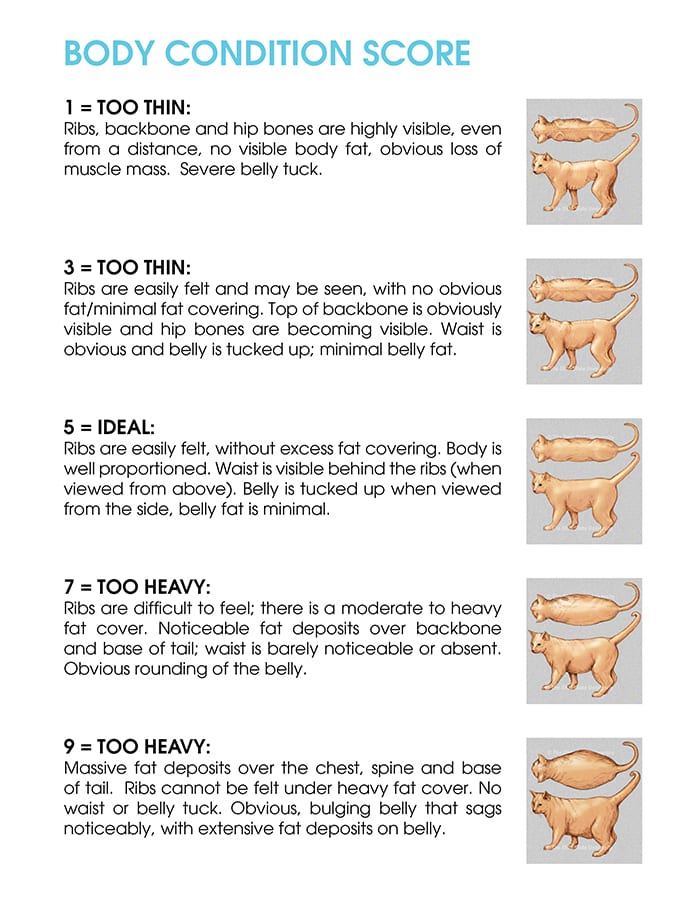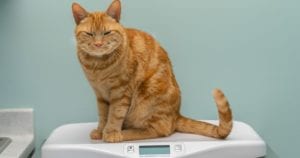A recent study about feline obesity in the Journal of Feline Medicine and Surgery found that cats don’t like being on a diet any more than people do!
While not surprising, it is interesting to note the behavior that led to this conclusion. Cats that were switched from free feeding to controlled, calorie-restricted feeding ate faster. They also had more threat-related interactions with other cats in the same household. When the cats returned to free feeding, their behavior returned to normal.
Approximately 50% of the adult cat population in the U.S. is overweight, and 30-35% of those cats are obese, which is defined as being more than 20% over ideal weight. Obese cats have a shorter lifespan. In addition, overweight cats are at a higher risk of cancer, diabetes, heart disease, high blood pressure, arthritis, bladder stones, and complications from heat.
If you’re not sure whether you have a fat cat, ask your vet. An extra half-pound on a cat is the equivalent of 5-10 pounds on a human.
What’s Too Fat in a Cat?
This “Body Condition Score” chart illustrates what different body conditions look like. Which level does your cat fit in?

Causes of Obesity in Cats
Free choice feeding in unlimited amounts and excess snacks are the main cause of obesity. Cats should be fed a daily controlled portion of food which can be divided into multiple small meals per day, rather than free access to an endless food dish.
Some studies have shown that some breeds of cat are less likely to be obese than a crossbred cat, but it is not clear why this is the case. It is clear that neutered cats are more likely to become obese, and purebred cats may be less likely to be neutered. Owners of purebred cats often maintain a relationship with the breeder, who might serve as a source of advice about cat health and feeding.
Some medications can cause your cat to gain weight. Steroids, while needed for some conditions, are well-known to increase hunger and make any animal want to eat more. Some other drugs are known to stimulate a cat’s appetite and can contribute to feline obesity.
Dietary Management of Feline Obesity
Many vets recommend a target weight loss of 1-2% per week. As obligate carnivores (animals that must eat meat to survive), cats need precise nutrition. Simply reducing the amount of regular cat food they eat may create nutritional deficiencies over time. Talk to your vet about a specially fortified reducing diet.

Weight loss is slow and patience is required. It may take 6-12 months or longer to shed the weight safely depending on how much weight loss is needed. We recommend feeding more often than just twice daily if possible, to reduce begging and rapid eating, “We often utilize automatic feeders to accomplish this. Cats actually prefer to eat 12-18 small meals a day and more small meals increases the metabolic expense of food digestion and absorption.”
When your cat reaches its target weight, it is important to continue to maintain a controlled diet to avoid regaining excess weight.
Daily activity and exercise is an extremely important component of enrichment in a cat’s life that increases their quality of life in many ways. Even 10 minutes a day of increased activity can have a beneficial effect on a cat’s health. Activity can take the form of an enclosed catio, a climbing wall, active play with a laser pointer or other chase toy, or putting the cat’s food into a food cube that must be pushed around to dispense food. Exercise wheels are an option, but some cats will not use them.

